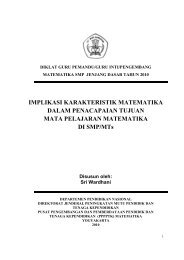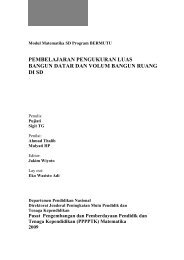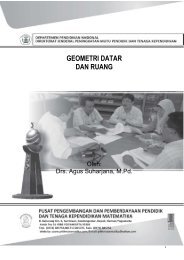25 Biggest Mistakes Teachers Make and How to Avoid Them
25 Biggest Mistakes Teachers Make and How to Avoid Them
25 Biggest Mistakes Teachers Make and How to Avoid Them
You also want an ePaper? Increase the reach of your titles
YUMPU automatically turns print PDFs into web optimized ePapers that Google loves.
Mistake 1: Inappropriate Discipline Strategies<br />
The student in this scenario<br />
was obviously distracted or<br />
not paying attention. The “crime”<br />
was not following directions. Bend -<br />
ing down <strong>and</strong> yelling in front of the<br />
student ’ s face was an authoritarian<br />
tactic that meant “do as I say.” This<br />
teacher seems <strong>to</strong> have had a need <strong>to</strong><br />
be in control <strong>and</strong> <strong>to</strong>ok the child’s<br />
inattentiveness personally.<br />
Knowledgeable teachers would<br />
know that it is not unusual for students,<br />
<strong>and</strong> adults, <strong>to</strong> become distracted<br />
in a group setting where they<br />
are forced <strong>to</strong> pay attention. Armed<br />
with that knowledge, the teacher can<br />
be patient <strong>and</strong> underst<strong>and</strong>ing <strong>and</strong><br />
repeat the instructions in a civil <strong>to</strong>ne.<br />
Some students need <strong>to</strong> hear the<br />
SCENARIO 1.18<br />
Cheating Exposé<br />
directions for an assignment more<br />
than once. If the students still do not<br />
underst<strong>and</strong> after one or two repetitions,<br />
the teacher could demonstrate<br />
or have class members explain the<br />
assignment in their own words until<br />
everyone underst<strong>and</strong>s. Before giving<br />
instructions, it is always advisable<br />
for a teacher <strong>to</strong> wait until she has<br />
everyone’s attention.<br />
She should model the instructions<br />
as much as possible using the<br />
actual materials. If not paying attention<br />
had been a habit with this student,<br />
the teacher could have let the<br />
student know, before the instructions<br />
were given, that the student would<br />
be expected <strong>to</strong> help by repeating the<br />
instructions <strong>to</strong> the class.<br />
I was in middle school <strong>and</strong> I was caught cheating. The teacher <strong>to</strong>ok up my paper <strong>and</strong><br />
asked, in front of the class, if I thought that it [cheating] was worth it.<br />
The teacher exposed a cheater<br />
in class. On the surface, this<br />
seems reasonable. The teacher’s<br />
intent seemed <strong>to</strong> be <strong>to</strong> embarrass<br />
the child enough that this cheating<br />
behavior would cease.<br />
Insightful, experienced teachers<br />
know that students cheat when they<br />
do not know the material or they are<br />
afraid that they do not know enough<br />
of the material. Sometimes, students<br />
feel pressure from parents <strong>and</strong> highachieving<br />
siblings or peers <strong>to</strong> do well<br />
in school. Thus, the motive for cheating<br />
becomes an important issue. If<br />
teachers are aware of the cheating<br />
motive, they can help students with<br />
the problem, effectively eliminating<br />
the need <strong>to</strong> cheat. A public exposé<br />
could cut off any means of communication.<br />
A soft reprim<strong>and</strong> in private<br />
would be more effective (O’Leary,<br />
Kaufman, Kass, & Drabman, 1970). In<br />
private, the teacher is more likely <strong>to</strong><br />
get an explanation. Issuing a referral<br />
for cheating should be a last resort.<br />
19





